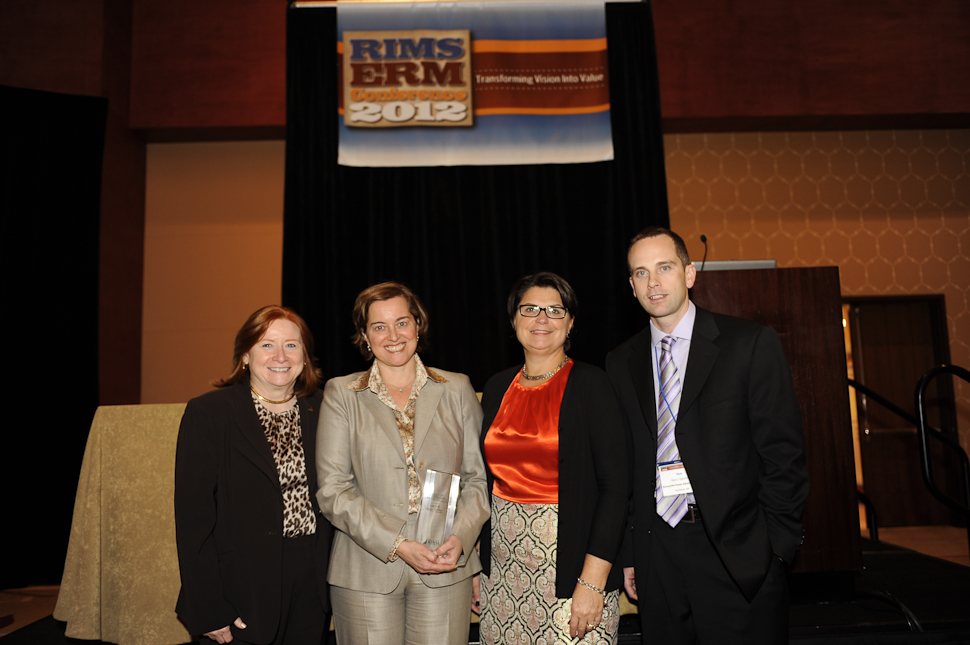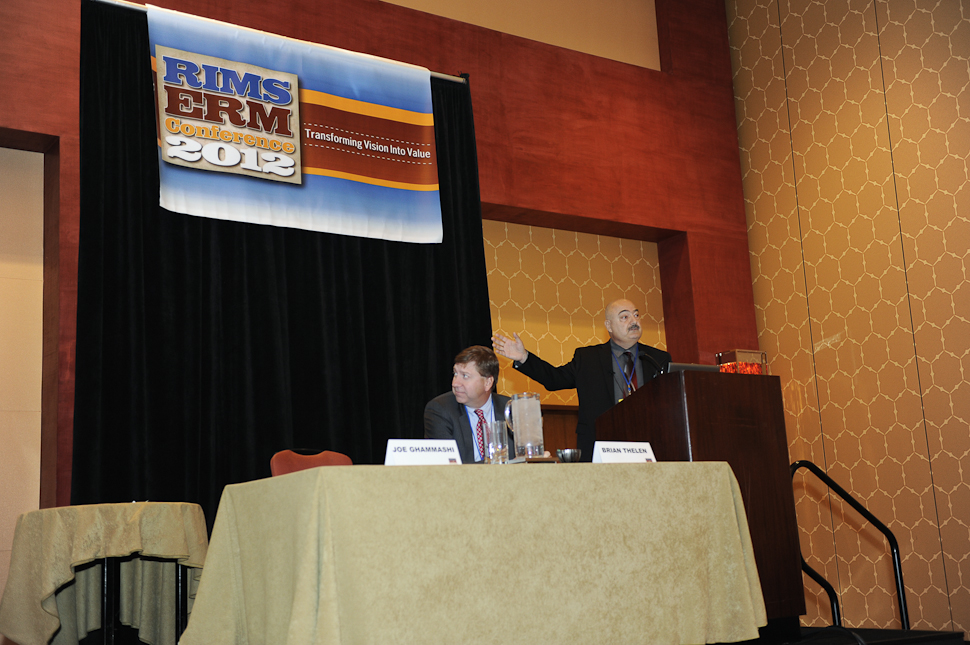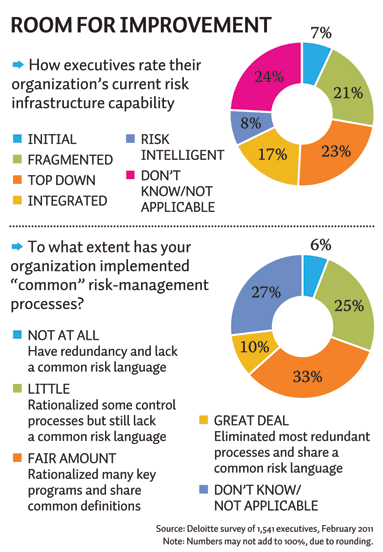Earlier this week, the second annual RIMS ERM Conference 2012 was held in San Antonio. With a theme of “Transforming Vision into Value,” attendees took in two days worth of educational sessions and discussions designed to provide them with the necessary expertise to develop and enhance enterprise risk management programs in their organizations.
Author and leadership expert Robert Stevenson set the tone in a keynote address that stressed the importance of looking at risk strategically as a means of ensuring perhaps the most valuable organizational commodity: its own survival. Stevenson pointed out that between 1985 and 2000, more than 90 companies have been pushed off the Fortune 500 and that the top 10 employers in 1960 have all completely changed today. What this demonstrated said Stevenson was that “future success is not inevitable because of past triumphs.” For risk managers, then, it is imperative that they remind their organizations that success is never final and that they need to pay attention to risk whether they like it or not. “If you don’t like paying attention to risk,” he said, “you will hate paying attention to extinction.”
So in order to avoid being blindsided, organizations need to adopt a wider perspective regarding risk, which naturally leads to ERM as a means to not only address threats, but to take advantage of opportunities. To that end, subsequent sessions delved into a wide range of topics with experts offering practical advice on things like incorporating scenarios into strategic planning or using key risk indicators and root cause analysis to refine risk assessment. Presenters also shared their stories of how they were able to achieve ERM success in their organizations, giving attendees the opportunity to see theory in action and learn from the accomplishments of their risk management peers.
In an effort to recognize one of these success stories, the conference was highlighted by the presentation of the 2012 ERM Award of Distinction, which went to the YMCA of Greater Toronto for its sophisticated risk intelligence program. The program incorporated strategic risk tools and techniques including a collaborative project risk assessment that was aligned with the organization’s mission, vision and strategic plan objectives to produce an average 25% growth in monthly membership sales at one of its health, fitness and recreation centers, with phased replication and reach in other communities.
Sysco Corporation also received an honorable mention for successfully implementing an ERM program that helped transform the organization’s business culture from siloed businesses to a cohesive and interconnected network of companies focused on uncovering otherwise untapped opportunities.
“Enterprise risk management has become an increasingly important organizational competency that not only protects organizations from detrimental risks but has proven to help identify positive risks that can lead to profitable opportunities,” said Carol Fox, RIMS Director of Strategic and Enterprise Risk Practice. “The YMCA of Greater Toronto and Sysco Corporation are shining examples of how risk management can create value for an organization and their work is truly deserving of this honor.”
In all, the conference proved to a valuable learning experience for all who attended. The following are some of the images from San Antonio.

Monica Merrifield, vice president, risk intelligence for the YMCA of Greater Toronto (second from left), received the ERM Award of Distinction.

Brian Thelen, general auditor and CRO, General Motors (left) and Joseph Ghammashi, senior vice president and CRO, CorporateOne FCU





